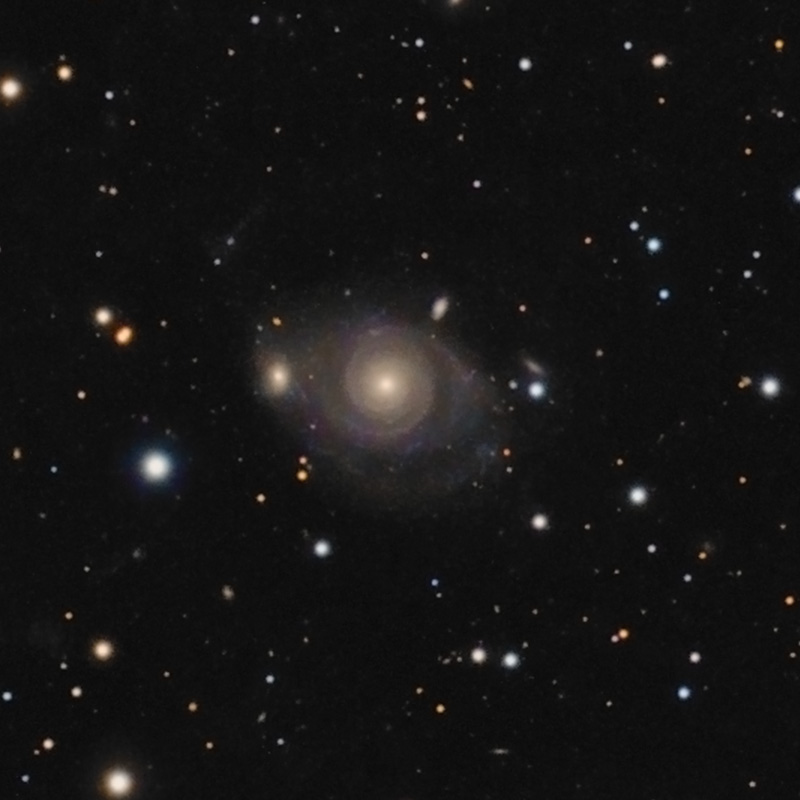| Description | Images |
Object name: NGC0262Designation(s): NGC0262, NGC 262 is a much studied spiral galaxy in Andromeda about 190 million light-years away. It somehow missed being in Arp's Atlas as it would fit his category for spirals with high surface brightness companions on an arm. The companion is LEDA 212600. While it is likely a true companion there's no distance data of any type to confirm this at NED. NGC 262 appears it could be somewhat tidally distorted. It is surrounded by a huge halo of cold hydrogen gas. This can be seen in the image at: http://images.nrao.edu/32 . The image is oriented the same as mine. This site says the companion has the same redshift as NGC 262. Note it lies well within the Hydrogen halo. It was discovered by Lewis Swift on September 17, 1885. Related Designation(s):10W 030, 1AXG J004847+3157, 1RXP J004847.4+315716, 1WGA J0048.7+3157, 2MASS J00484714+3157251, 2MASX J00484711+3157249, 2MASXi J0048471+315724, 2PBC J0048.7+3157, 2XMM J004847.1+315724, 2XMMp J004847.1+315724, 6C B004604.8+314101, 87GB 004606.1+314104, 87GB[BWE91] 0046+3141, B2 0046+31, BZU J0048+3157, CGCG 0046.1+3142, CGCG 501-020, CGRaBS J0048+3157, CRATES J0048+3157, CRATES J004847.14+315725.1, GALEXASC J004847.23+315726.3 , GALEXMSC J004847.24+315725.9 , HDCE 0036 NED004, ICRF J004847.1+315725, IERS B0046+316, IRAS 00461+3141, IRAS F00460+3141, JVAS J0048+3157, LDCE 0043 NED005, LGG 014:[G93] 006, LQAC 012+031 001, MAPS-PP O_0601_0810121, MAXI J0048+320, MCG +05-03-008, MG3 J004846+3156, MRK 0348, NGC 0262, NGC0262, NPM1G +31.0015, NSA 127761, NVSS J004847+315725, OB +376, PBC J0048.7+3157, PGC 002855, QVW5 J004843+3200, SWIFT J0048.7+3157, SWIFT J0048.8+3155, SWIFT J0048.8+3157, TXS 0046+316, UGC 00499, UVQS J004847.14+315725.1, UZC J004847.2+315725, XSS J00485+3203, [BTW2003] J0048+3159, [dML87] 016, [HRT2007] J004847+315718, [JBB2007] J004847.14+315725.0 , [KRL2007] 007, [LBC2010] J0048+3157, [MBI96] 0046+316, [MGL2009] 0086, [MSU2014] J004847+315725, [RRP2006] 03, [VCV2001] J004847.2+315725, [VCV2006] J004847.2+315725, [WB92] 0046+3141, [WMR2009] 002, |

